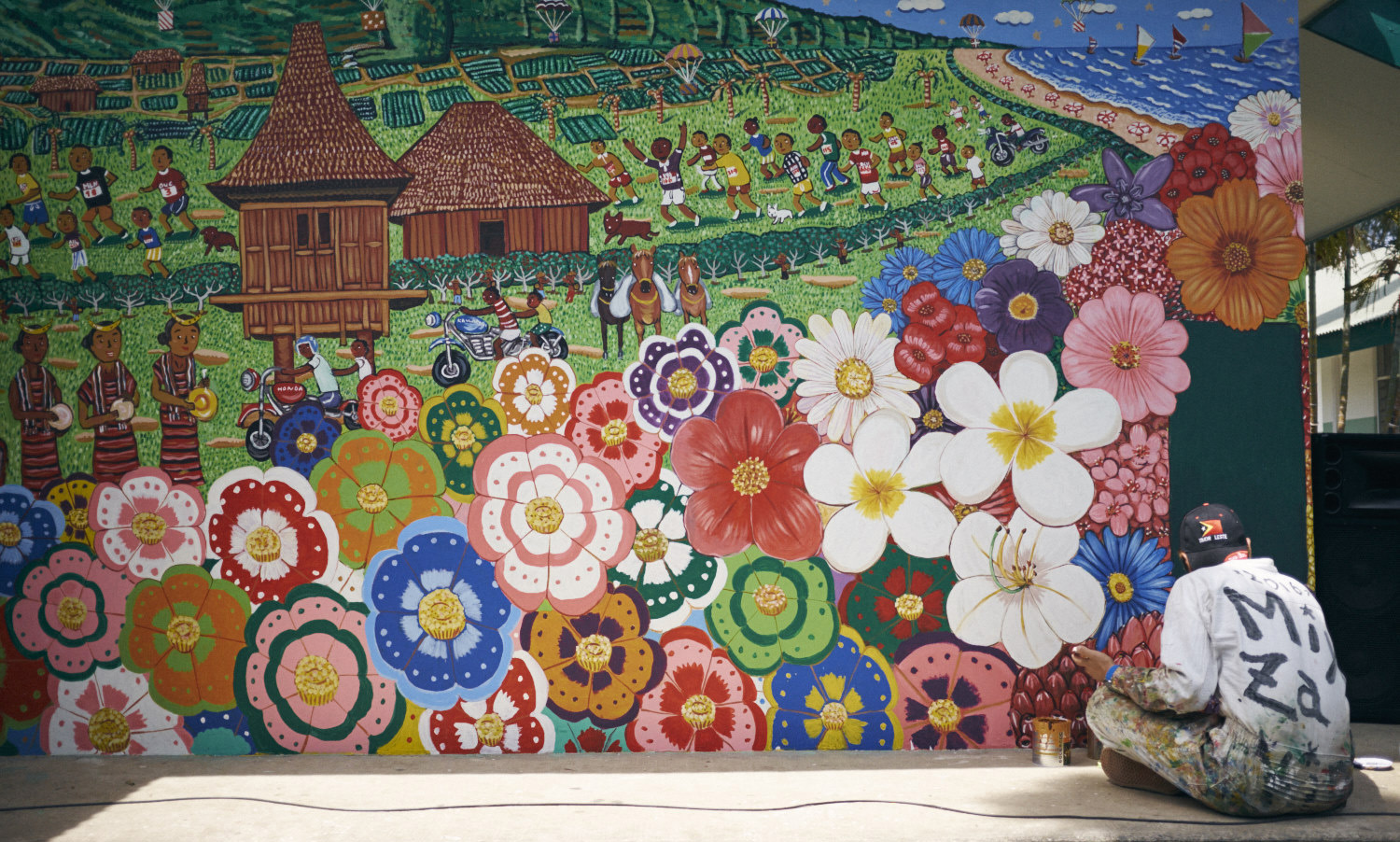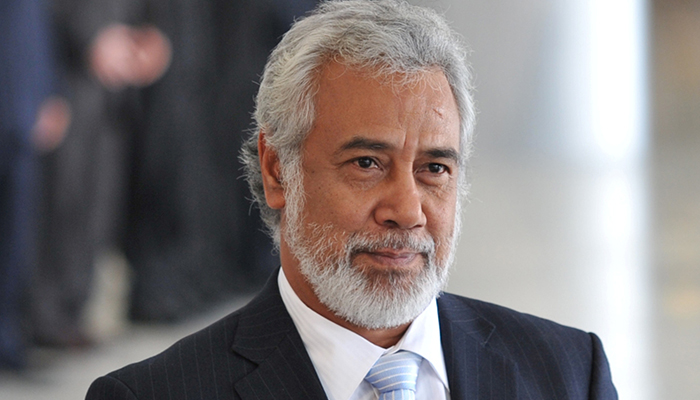One type of art they’re known for is a type of hand-woven fabric called tais. Depending on where they are woven, tais can come in a variety of designs and colors, some of which are sought after by collectors. Tais are used in a number of ways, from ceremonial dances and religious gatherings to more everyday purposes like bags, purses, table runners, and even bookmarks. These fabrics and many of the other crafts, mostly created by women, can be found in shops and roadside galleries throughout the island.
 |
| Mural on the wall at Valedares National Hospital in Dili |
There are art schools that teach more Western-style painting, ceramics, and sculpture. And several of these art schools are also open as galleries where students can showcase and even sell their work. Many of the Timorese artists use their craft to express the history and culture of their island, often using bright colors to portray their way of life.
There are quite a few poems and other works published in the Tetum language. However, I think that most literature that is published from Timor-Leste is in Portuguese (probably ideal for a broader audience). But Timorese literature in and of itself is just not that extensive. One common theme in poetry and novels are centered around celebrating their island culture as a sense of what it means to be Timorese, i.e. what separates them from Portuguese and/or Indonesian culture. There are some efforts to teach Tetum to the outside world, and I've found several books on Tetum grammar for English speakers.
 |
| Xanana Gusmão |
One writer that stands out among Timorese writers is Xanana Gusmão. He was the leader of the political party known as Fretilin (Frente Revolucionária de Timor-Leste Independente), which started out as a resistance movement as they gained independence from Portugal and, later on, Indonesia. He had written a couple books about the struggles for independence that the country went through, but he was also a well-known poet as well. One of his most famous poems is called Grandfather Crocodile. Fun fact: his real name is José Alexandre. Xanana is just a nickname he got when he was younger, named after a song by the Danish glam rock band The Walkers. (I've also read that it was from the American rock band Sha Na Na.)
 |
| Luis Cardoso |
Other writers from Timor-Leste include Luís Cardoso (novelist who writes in Portuguese, famous for his book The Crossing), Fernando Sylvan (poet and writer who was born in Dili but spent most of his life in Portugal, wrote a lot about Timorese folklore and stories), and Francisco Borja da Costa (Tetum-language poet who was famous for writing the lyrics to their national anthem, was executed by Indonesian forces the day after their invasion).
Up next: music and dance


No comments:
Post a Comment